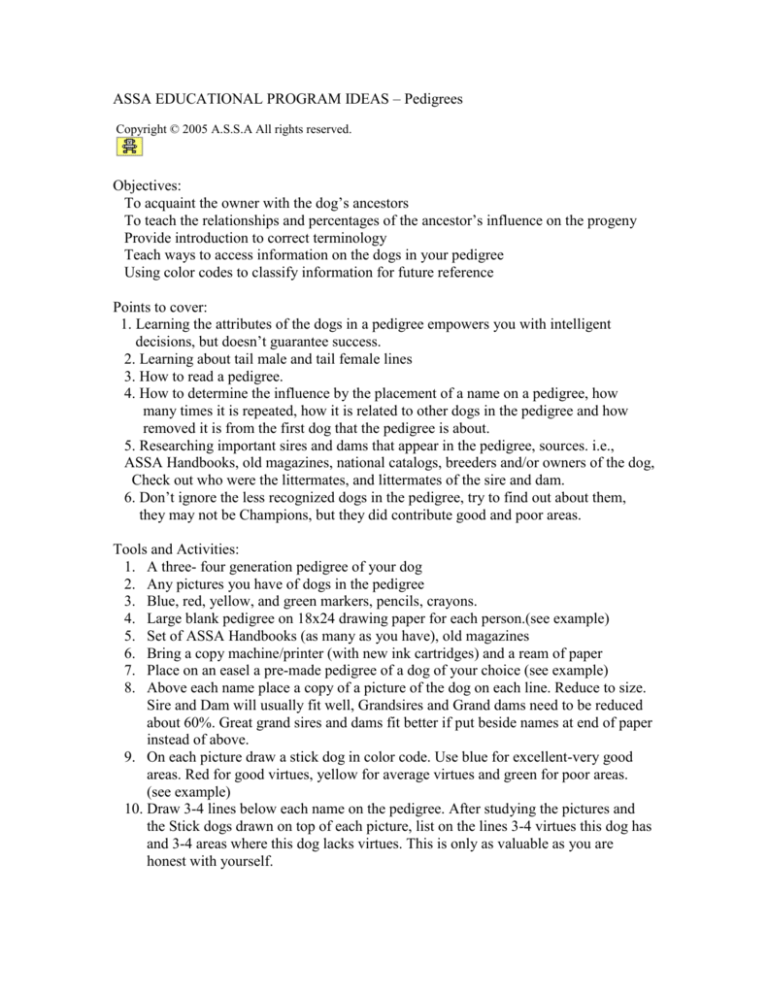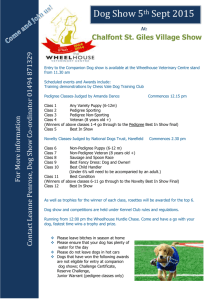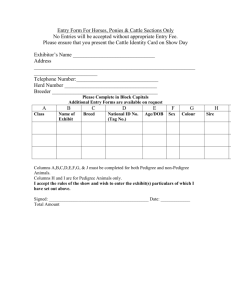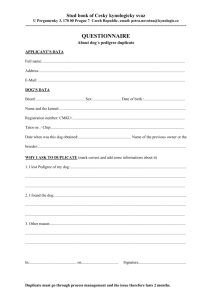
ASSA EDUCATIONAL PROGRAM IDEAS – Pedigrees
Copyright © 1998 A.S.S.A All rights reserved.
Copyright © 2005 A.S.S.A All rights reserved.
Objectives:
To acquaint the owner with the dog’s ancestors
To teach the relationships and percentages of the ancestor’s influence on the progeny
Provide introduction to correct terminology
Teach ways to access information on the dogs in your pedigree
Using color codes to classify information for future reference
Points to cover:
1. Learning the attributes of the dogs in a pedigree empowers you with intelligent
decisions, but doesn’t guarantee success.
2. Learning about tail male and tail female lines
3. How to read a pedigree.
4. How to determine the influence by the placement of a name on a pedigree, how
many times it is repeated, how it is related to other dogs in the pedigree and how
removed it is from the first dog that the pedigree is about.
5. Researching important sires and dams that appear in the pedigree, sources. i.e.,
ASSA Handbooks, old magazines, national catalogs, breeders and/or owners of the dog,
Check out who were the littermates, and littermates of the sire and dam.
6. Don’t ignore the less recognized dogs in the pedigree, try to find out about them,
they may not be Champions, but they did contribute good and poor areas.
Tools and Activities:
1. A three- four generation pedigree of your dog
2. Any pictures you have of dogs in the pedigree
3. Blue, red, yellow, and green markers, pencils, crayons.
4. Large blank pedigree on 18x24 drawing paper for each person.(see example)
5. Set of ASSA Handbooks (as many as you have), old magazines
6. Bring a copy machine/printer (with new ink cartridges) and a ream of paper
7. Place on an easel a pre-made pedigree of a dog of your choice (see example)
8. Above each name place a copy of a picture of the dog on each line. Reduce to size.
Sire and Dam will usually fit well, Grandsires and Grand dams need to be reduced
about 60%. Great grand sires and dams fit better if put beside names at end of paper
instead of above.
9. On each picture draw a stick dog in color code. Use blue for excellent-very good
areas. Red for good virtues, yellow for average virtues and green for poor areas.
(see example)
10. Draw 3-4 lines below each name on the pedigree. After studying the pictures and
the Stick dogs drawn on top of each picture, list on the lines 3-4 virtues this dog has
and 3-4 areas where this dog lacks virtues. This is only as valuable as you are
honest with yourself.
11. Evaluate which virtues and which weaknesses seem to be following through on
which dogs in this pedigree.
Homework: Do this for every dog in your breeding program and dogs you are considering





